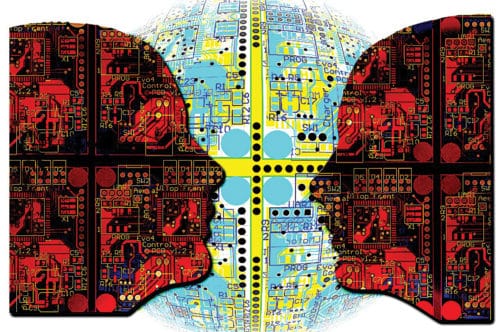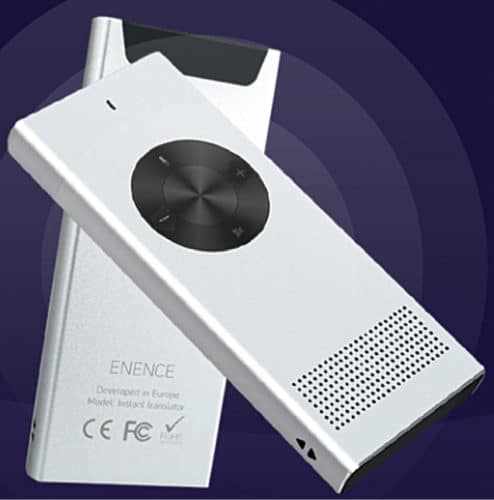The consumer electronics industry is constantly evolving and growing at a fast pace. It has seen a number of new products and developments in recent years, which has led to aggressive investment and innovation. Presented in this article is a roundup of the latest AI trends in the consumer electronics industry.

What if your electrical home appliances become live—hear you, see you, feel your emotions and become more interactive? Some of these features have already been made available in artificial intelligence (AI)-based smart home appliances. Interactive and emotional toys, smart fridges, smart thermostats, voice assistants and others are now found in many homes.
Created by a Japanese company, mui is an interactive wood panel that serves as a smart home control hub.
There is no doubt that AI technology is already making a huge impact on our daily lives.
We have seen the capabilities and applications of AI in the manufacturing industry, in oceans and even in the air.
Now, AI is gaining importance in consumer electronics as well. Traditional user interfaces in consumer devices are being replaced with abstract user-interfaces such as voice-based and gesture-based. This emerging technology has created not only many new jobs but has also changed consumer behaviour across the globe.
Some experts say that instead of using cellphones, smart entertainment devices and smart home electrical appliances could be used more often with intelligent voice control in the future.
Also Read: Do’s and Don’ts for Consumer Electronics Startups
While there are many ways that AI is changing our world, let us explore ten trends that are worth mentioning and that are revolutionising current consumer electronics.
1. Smart homes
The complete automated home is a new concept, but slowly the world is moving towards its true realisation. The Internet of Things (IoT) and AI are being integrated into many household products. Such AI-powered capabilities ensure convenience, comfort and affordability for users. In a smart home, intelligent devices can automatically get switched off or on, and be monitored in real time using smartphones.
2. Smart TVs
Internet-connected TVs have become a lot more smarter with AI technology. As per a recent report, the global smart TV market accounted for US$ 158.4 billion in 2018, and this number is expected to increase further in the years to come.
Next-generation intelligent smart TVs can connect to the Internet wirelessly, and access online streaming services.
AI-powered TVs can suggest movies, TV shows and Web series based on viewing habits of the customers. These have enabled browsing such social media applications as Instagram and Facebook, stream live videos and check emails, just like on smartphones. Future smart TVs will deliver even better quality pictures using less bandwidth.
3. Voice-enabled technology
We are witnessing the use of voice assistants, such as Amazon Alexa and Google Assistant, in households across the globe. These AI-powered devices also have a presence in developing countries like India. Report says that voice-activated technology is a rapidly expanding market, with over 150 million Indians likely to use voice assistants by the end of 2019.
However, a huge country like India has vast language barriers. Ninety per cent of voice assistants currently available in India only support English. Hence, Indian startups such as Liv.ai, Vokal and Reverie Language Technologies are making strides to create AI technology for consumers in regional languages. This move could enable consumers in poorer, rural communities to benefit from voice-enabled technology.
4. Instant language translation
No language barriers anymore? Well, that is true with the latest AI-powered language translation devices. Such translators are becoming popular, especially among frequent travellers and students. Although, Google Translate app can be used as a language translator, it still falls short of some languages, especially Asian ones.
There are dedicated devices that are more efficient and powerful than Google Translate. For example, Muama Enence instant translator is one such device. It enables real-time two-way communication across the globe. It can also be used to learn foreign languages. All you need to do is press the button, speak and get the voice translation in an instant.

5. AI-driven education
Robots that play games to assist human beings are being used in schools. AI technology is being used to assist children with disabilities or encourage technical creativity. It might soon be a teacher’s new best friend. As compared to humans, AI is less likely to make content-based errors. It can access large amounts of data from the network and give correct answers. It can read faces of students and respond accordingly.
6. Smart security systems
Capabilities of traditional surveillance cameras can be enhanced using AI, the IoT and machine learning. Modern smart cameras can be trained to monitor specific locations, generate alerts and take real-time actions to safeguard user’s assets. Such systems can also provide facial recognition to control access, detect motion, detect sound and connect with smart home systems. Based on specific user preferences, the cameras can send personalised alerts for specific incidents.
7. Online shopping
This is a global trend that is shaping the behaviour of consumers. AI algorithms provide product recommendations based on assessments of individual buying patterns and product preferences, making the shopping experience more relevant, enjoyable and satisfying. There is a good presence of AI technology in apparel, fashion and athleisure. These products are designed to suit consumers’ individual features and needs.
Food and beverage companies can customise their packaging using digital printing technology.
8. Evolution of consumer behaviour and adaptation
AI has embarked on its journey of revolutionising consumer electronics. Consumers are trying to embrace the opportunities brought about by AI technology. However, consumer organisations can embrace AI only if they are ready to adapt. Technology companies are racing ahead of the curve in the fast-paced AI-driven world. Digital products and services are made as inclusive and affordable as these are innovative. Regulators and developers are required to create an environment where these emerging technologies are built with consumer safety, privacy and security in mind.
9. Data protection
Governments around the world are trying to enhance data protection regulations and put the right regulatory standards in place to protect consumers against data breaches. There is a need for robust data protection laws across the world. There are many countries that have data protection laws in place. Some are leading the way by converging their domestic laws to universally-recognised standards. Others have laws in place, which are not as robust as they could be but provide a good starting ground for improvements.
10. Regulators and developers
AI is growing at a fast speed while at the same time there are a number of issues to be addressed, including the danger of killer robots, digital privacy for consumers and other ethical issues. There are regulatory bodies that monitor and control various AI developments to protect consumers. However, there are conflicting opinions as to whether AI should be governed by binding law, or whether certain areas can be left to a code of ethics and self-regulation. Certainly, consumer behaviour will depend on the regulations and developers.
Conclusion
Applications of AI in consumer electronics open up many growth avenues and opportunities. The IoT, AI and machine learning are being used in many consumer electronics. Thus, devices will soon become more autonomous and get better at assisting consumers in the future. As technology progresses, consumer electronics companies are racing to provide next-generation smart products that are powered by AI technology.
Companies that can offer real values and delightful experiences to users are likely to thrive. Affordable access to digital products and services would enable consumers to tap the true potential of AI in developing countries across the globe. And we as consumers will witness the real AI explosion in consumer electronics in the coming years.







